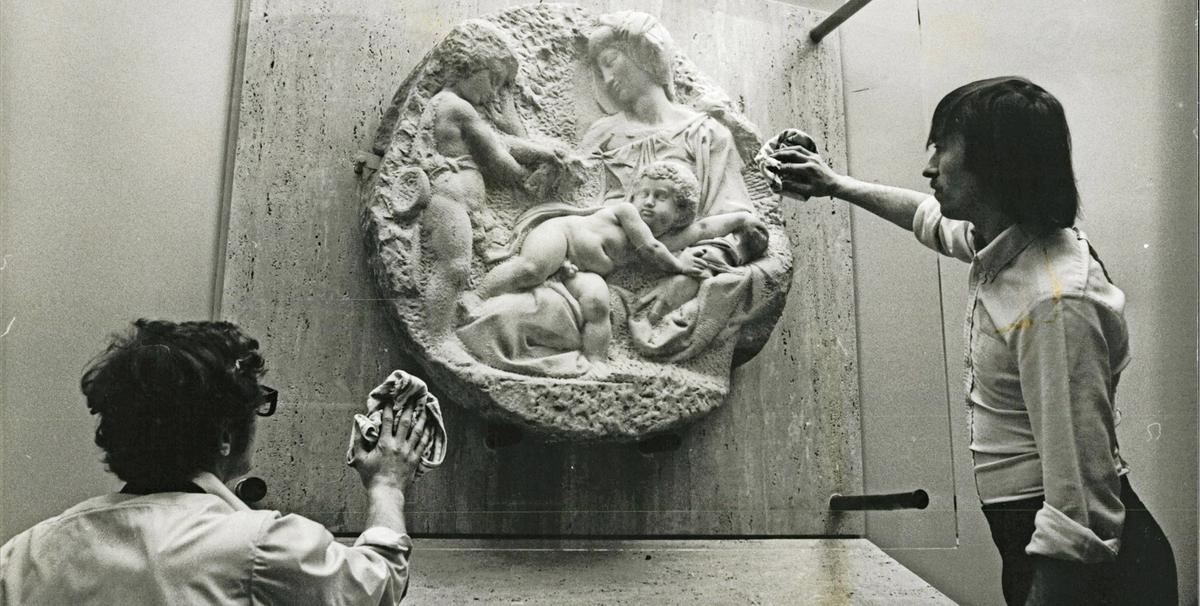In the late 1970s the Royal Academy considered selling off its Michelangelo Taddei Tondo, which was then valued at £6m—well over twice what any work of art had ever fetched at auction. The record was held by Velázquez’s Portrait of Juan de Pareja (around 1650), which had been bought by New York’s Metropolitan Museum of Art for £2.3m in 1971. The academy valued its entire collection in 1977 for a total of £7.5m. The Michelangelo was then worth £5m, and its other 56 sculptures a total of just under £70,000. Constable’s landscape painting The Leaping Horse (1825), its second most valuable item, was valued at £800,000. By the following year, the Michelangelo valuation had been increased to £6m.
The academy was suffering serious financial problems at this time, and was seeking government support. In February 1978 the Queen, as the institution’s formal patron, was warned: “We could sell possessions, but this is a slippery slope. The only one which might solve the problem [the tondo] is looked upon by many as a national treasure.”
In December 1978 the academy’s secretary, Sidney Hutchison, wrote to Drummonds Bank (with which it had a £675,000 overdraft): “Very confidentially, if this official attempt for subsidy from the Government through the Arts Council should fail, my view is that the Academy would then have no alternative but to sell the Michelangelo Tondo for its worldwide market price, ie in the region of £6,000,000.”
Lord Donaldson, the minister for the arts, pointed out that any assistance would have to come from the Arts Council, an arm’s length body. The council pleaded a “shortage of cash” and said grants could be given only if the government gave it extra money, which was not forthcoming. Fortunately, the academy took internal measures that gradually improved its financial situation and the sale idea was quietly dropped.
By this time, there had been a proposal to lend the Michelangelo to the Metropolitan Museum of Art in New York, partly to help bring in donations from US supporters. The loan never happened, partly because of obstacles over a temporary export licence. Donaldson warned Hutchison that not only were there risks that the tondo might be stolen or damaged, but that the academy “might receive and accept a substantial offer for the work” from a US source.
The Michelangelo has still never been lent abroad, and probably never will be for conservation reasons, since there is a hairline crack on the reverse. There was considerable discussion with conservators about whether it could be lent to the National Gallery, but it was ultimately deemed safe. For its current loan, the tondo is covered by government indemnity. The sculpture’s value remains confidential but must currently be well over £100m.


